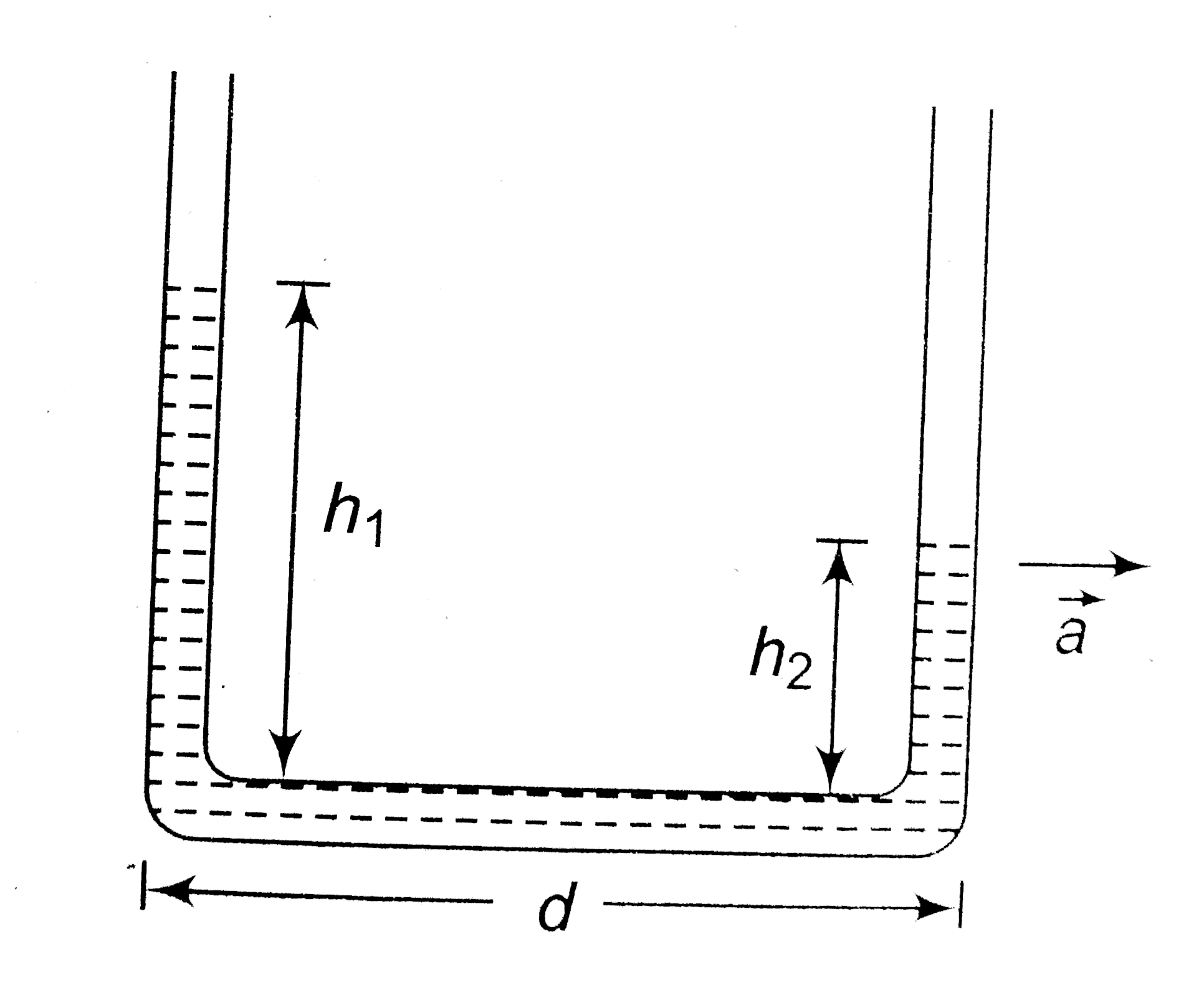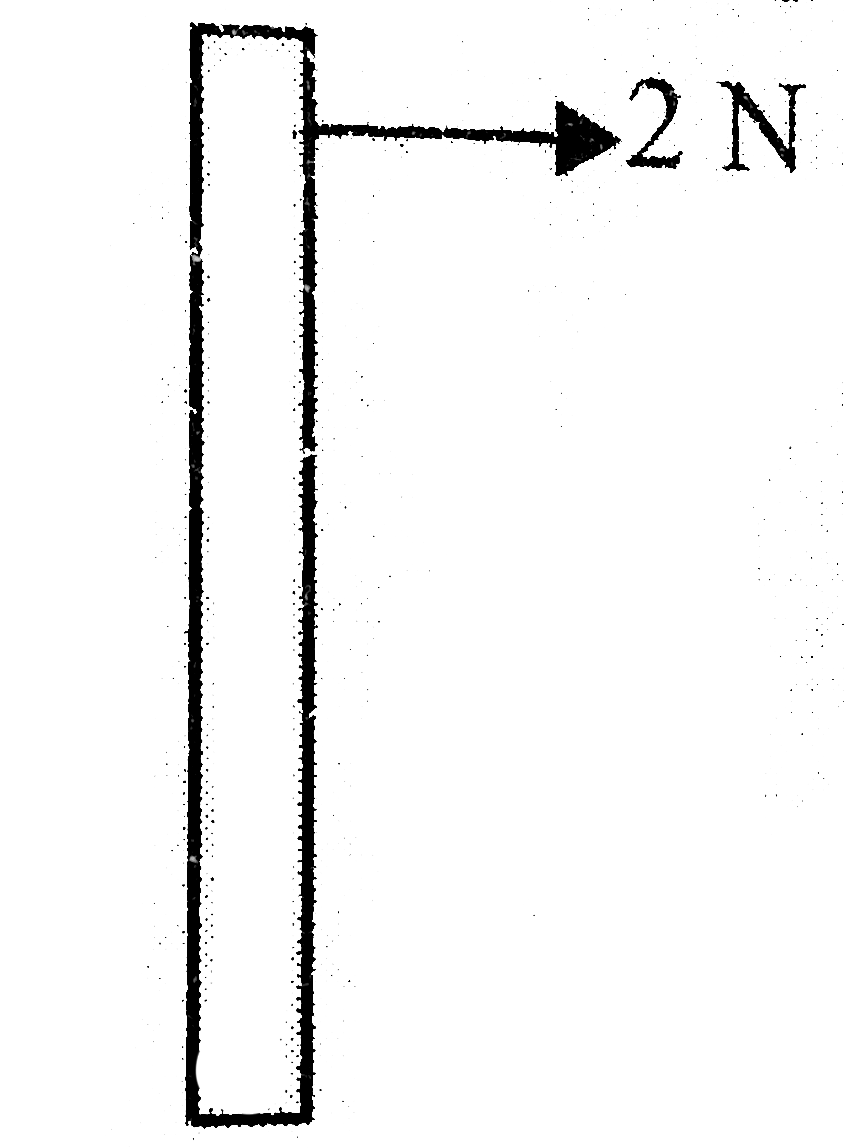A bent tube of uniform cross section is mounted on a cart which is accelerating towards right with constant acceleration 'a'. The total length of the liquid is 2√2l. Find the level difference between two limbs in equilibrium (a=2m/s2,l=10m)

2 m
4 m
6 m
12 m
The correct Answer is:B
Step by step video, text & image solution for A bent tube of uniform cross section is mounted on a cart which is accelerating towards right with constant acceleration 'a'. The total length of the liquid is 2sqrt(2)l. Find the level difference between two limbs in equilibrium (a=2 m//s^(2), l=10 m) by Physics experts to help you in doubts & scoring excellent marks in Class 11 exams.
Topper's Solved these Questions
- BOOK - DC PANDEYCHAPTER - PROPERTIES OF MATTEREXERCISE - More than one option is correct21videos
PROPERTIES OF MATTER
- BOOK - DC PANDEYCHAPTER - PROPERTIES OF MATTEREXERCISE - Comprehension32videos
PROPERTIES OF MATTER
- BOOK - DC PANDEYCHAPTER - PROPERTIES OF MATTEREXERCISE - Integer8videos
PROPERTIES OF MATTER
- BOOK - DC PANDEYCHAPTER - PROJECTILE MOTIONEXERCISE - Level - 2 Subjective10videos
PROJECTILE MOTION
- BOOK - DC PANDEYCHAPTER - RAY OPTICSEXERCISE - Integer type q.15videos
RAY OPTICS
Similar Questions
A U-tube containing a liquid is accelerated horizontally with a constant acceleration a0. If the separation between the vertical limbs is l find the difference in the heights of the liquid in the two arms.
View SolutionA vertical U - tube of uniform cross - section contains water in both the arms. A 10 cm glycerine column (R.D. = 1.2) is added to one of the limbs. What is the level difference between the two free surface in the two limbs?
View Solution
Knowledge Check
- Question 1 - Select One
Fig, shows a U-tube of uniform cross-sectional area A accelerated with acceleration a as shown. If d is the seperation between the limbs. Then the difference in the levels of the liquid in the U−tube is
 AadgBgadCadgDad+g
AadgBgadCadgDad+g - Question 2 - Select One
two cars start moving from rest with uniform acceleration a=4m/s2 and 8m/s2 towards each other from points A and B. the distance between points is 96 m
ATheir relative velocity V at the time of the meeting is 24 m/sBThe first car covers one third of the total distance till thenCThe two cars are again at a distance 96 m 8 seconds after meeting.DThe first car has a speed of 16 m/s at the time meeting. - Question 3 - Select One
A particle starts with constant angular acceleration of 2 rad/s2 in a circle of radius 4m. Find angle between net acceleration and radial acceleration after 2 s :-
Aθ=tan−1(18)Bθ=tan−1(14)Cθ=tan−1(12)Dθ=tan−1(116)
A vertical U-tube of uniform cross-section contains water jn both the arms. A 10 cm glycerine column (R.D. = 1.2) is added to one of the limbs. The level difference between the two free surfaces in the two limbs wiil be
View SolutionFind acceleration a and angular acceleration α. If F=2N,m=1kg and l=2m
 View Solution
View SolutionA bead kept at the bottom of a wedge moves towards right with a velocity 2v on a frictionless surface. If the wedge moves towards left with a velocity v while accelerating towards right with an acceleration a as shown then the magnitude of acceleration of the bead is x units. Find x if v = 3 m/s a = a = 16 m/s2 R = 9 m ? 2v 기
View SolutionA bob of mass 0.2kg is suspended from the roof of a car with a massless string.The car is accelerating horizontally at a constant acceleration of 5√5m/s2.Find the tension in the string. (g=10m/s2)
View SolutionThere is a U-tube of different cross sectional area A=2.5cm2 and 4A of limbs fitted with the frictionless pistons each of mass m= 1 kg. An ideal liquid of density ρ=2000kg/m3 is filled in the tube and the tube is accelerated in horizontal direction with a constant acceleration 'a'. Find the value of acceleration 'a' (in m/s2 ) for which both pistons stay in the same horizontal level. The length of horizontal section of U-tube is l =1 m. (Take g=10m/s2 )
View Solution
